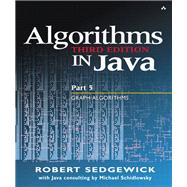
What is included with this book?
| Graph Algorithms | |
| Graph Properties and Types | p. 3 |
| Glossary | p. 7 |
| Graph ADT | p. 16 |
| Adjacency-Matrix Representation | p. 25 |
| Adjacency-Lists Representation | p. 31 |
| Variations, Extensions, and Costs | p. 36 |
| Graph Generators | p. 46 |
| Simple, Euler, and Hamilton Paths | p. 57 |
| Graph-Processing Problems | p. 70 |
| Graph Search | p. 81 |
| Exploring a Maze | p. 82 |
| Depth-First Search | p. 87 |
| Graph-Search ADT Methods | p. 91 |
| Properties of DFS Forests | p. 97 |
| DFS Algorithms | p. 105 |
| Separability and Biconnectivity | p. 112 |
| Breadth-First Search | p. 121 |
| Generalized Graph Search | p. 131 |
| Analysis of Graph Algorithms | p. 140 |
| Digraphs and DAGs | p. 149 |
| Glossary and Rules of the Game | p. 152 |
| Anatomy of DFS in Digraphs | p. 160 |
| Reachability and Transitive Closure | p. 169 |
| Equivalence Relations and Partial Orders | p. 182 |
| DAGs | p. 186 |
| Topological Sorting | p. 191 |
| Reachability in DAGs | p. 202 |
| Strong Components in Digraphs | p. 205 |
| Transitive Closure Revisited | p. 217 |
| Perspective | p. 222 |
| Minimum Spanning Trees | p. 227 |
| Representations | p. 230 |
| Underlying Principles of MST Algorithms | p. 240 |
| Prim's Algorithm and Priority-First Search | p. 247 |
| Kruskal's Algorithm | p. 258 |
| Boruvka's Algorithm | p. 264 |
| Comparisons and Improvements | p. 268 |
| Euclidean MST | p. 274 |
| Shortest Paths | p. 277 |
| Underlying Principles | p. 285 |
| Dijkstra's Algorithm | p. 293 |
| All-Pairs Shortest Paths | p. 304 |
| Shortest Paths in Acyclic Networks | p. 313 |
| Euclidean Networks | p. 322 |
| Reduction | p. 328 |
| Negative Weights | p. 345 |
| Perspective | p. 363 |
| Network Flow | p. 367 |
| Flow Networks | p. 373 |
| Augmenting-Path Maxflow Algorithms | p. 382 |
| Preflow-Push Maxflow Algorithms | p. 410 |
| Maxflow Reductions | p. 425 |
| Mincost Flows | p. 443 |
| Network Simplex Algorithm | p. 453 |
| Mincost-Flow Reductions | p. 472 |
| Perspective | p. 482 |
| References for Part Five | p. 487 |
| Index | p. 489 |
| Table of Contents provided by Ingram. All Rights Reserved. |
The New copy of this book will include any supplemental materials advertised. Please check the title of the book to determine if it should include any access cards, study guides, lab manuals, CDs, etc.
The Used, Rental and eBook copies of this book are not guaranteed to include any supplemental materials. Typically, only the book itself is included. This is true even if the title states it includes any access cards, study guides, lab manuals, CDs, etc.